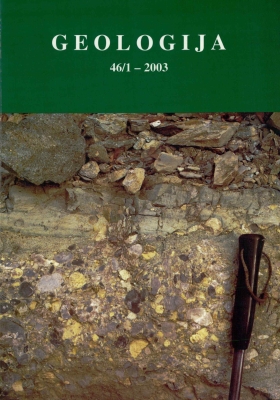Geochemistry of Upper Pliocene silty and sandy sediments from the well Mt-7, Moravci Spa, North-Eastern Slovenia
DOI:
https://doi.org/10.5474/geologija.2003.011Abstract
Bulk chemical composition of Upper Pliocene silts and sands, cored in the well Mt- 7, is strongly controlled by mineralogy - the abundance of quartz, carbonates and phyllosilicates in the sediments. Trace elements are in general more abundant in silts than in sands (Li, V, Cr, Co, Ni, Cu, Zn, Rb, Sr, Sb, Cs, REEs, Th and U), except for Y, Zr, Hf and Ba. The majority of yttrium probably originates from xenotime, Zr and Ht from zircone and Ba from alkali feldspars and the traces of barite. YREE patterns, normalised to PAAS show very similar shapes, although the abundance in sands are lower. Positive europium anomalies can be ascribed to the presence of plagioclase feldspars, and positive cerium anomalies to the presence of monazite. Sm/Nd ratios are relatively close and do not differ very much from Kiscellian marine siltstones termed »sivica« from Kozjansko, indicating that the source rocks for sediments probably did not change significantly.Downloads
How to Cite
Kralj, P. (2003). Geochemistry of Upper Pliocene silty and sandy sediments from the well Mt-7, Moravci Spa, North-Eastern Slovenia . Geologija, 46(1), 117–122. https://doi.org/10.5474/geologija.2003.011
Issue
Section
Articles

